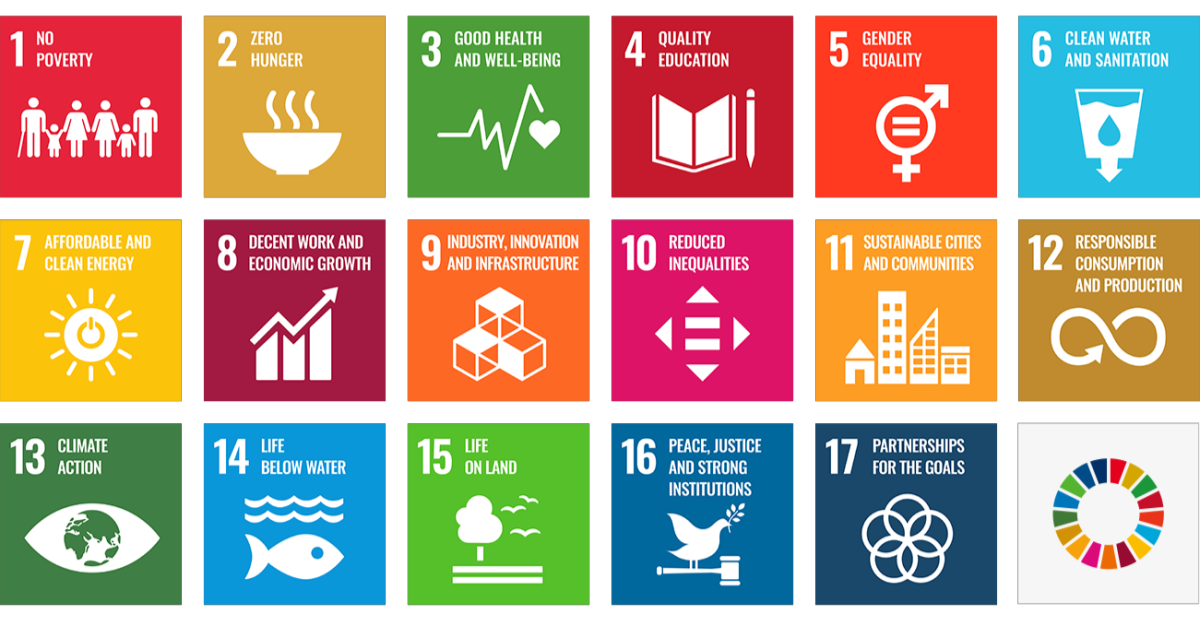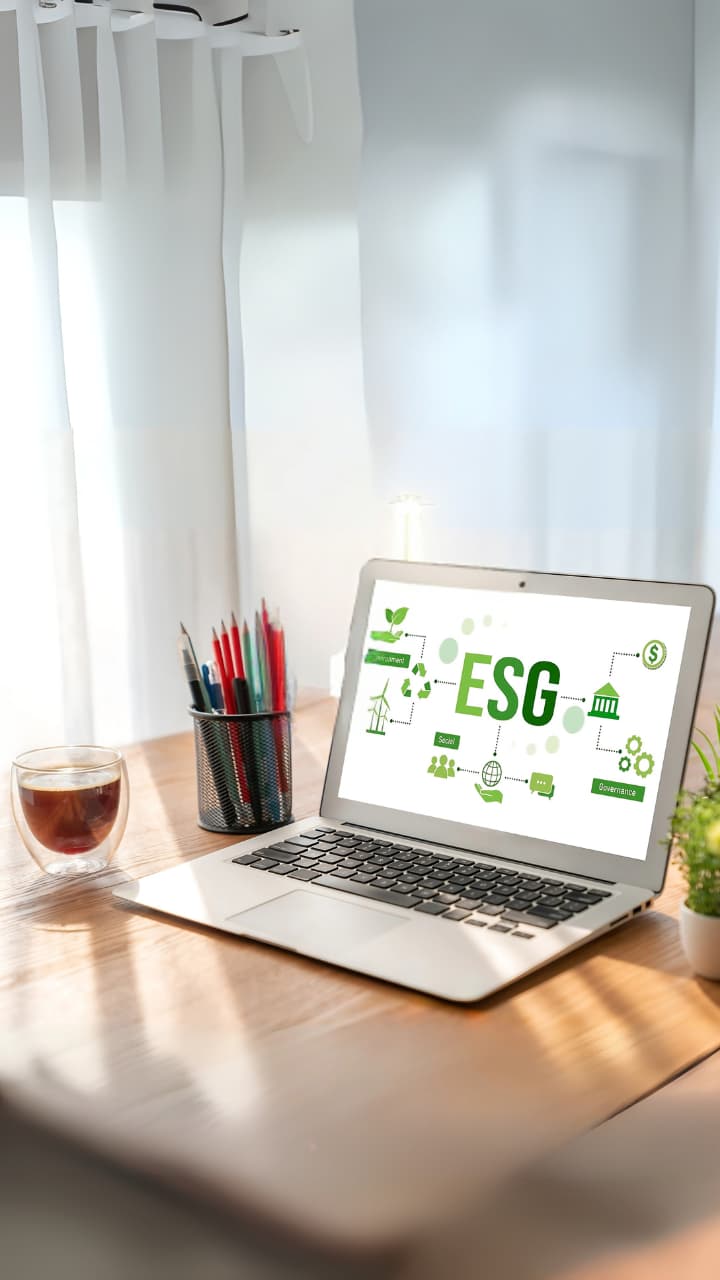Over the past year, ESG reporting has become a much more prominent topic of discussion. Previously, it was mostly a voluntary practice adopted by large corporations. Starting in 2024, ESG reporting becomes mandatory, as the European Union’s new non-financial disclosure standards come into effect under the Corporate Sustainability Reporting Directive (CSRD).
This shift reflects broader changes in Western society, where growing numbers of people are becoming more engaged with environmental issues and our shared responsibility to future generations. Many investors now consider sustainability alongside purely financial prospects. They’re unwilling to invest in anything that could harm their lives or the environment they live in. It’s a matter of reputation — and, more broadly, a reflection of deeper societal shifts: there’s growing attention to environmental protection, ethical business practices, and the long-term impact on future generations.
This article explores the United Nations Sustainable Development Goals (SDGs), which are often linked to sustainability reporting, and provides a brief overview of the most widely used sustainability reporting standards.
UN sustainable development goals in corporate sustainability planning
The United Nations Sustainable Development Goals (SDGs), launched in 2015, set expectations around key global challenges for society and all stakeholders — including investors. For the first time, all countries agreed on a shared sustainable development agenda that spans three broad dimensions — economic, social, and environmental. It consists of 17 goals and 169 targets to be achieved by 2030 (see Figure 1).

Figure 1. UN Sustainable Development Goals (the Global Goals or SDGs)
From an investment perspective, the role of the financial system in advancing the Global Goals goes beyond simply attracting new capital. It requires investors to reallocate existing capital and to act as responsible administrator of the companies they invest in.
The SDGs help address global challenges such as climate change, inequality, and poverty. They serve as a guiding framework for governments, businesses, and civil society in building a sustainable future. Many international companies and organizations incorporate these goals into their development strategies. The UN Global Compact is a special initiative of the UN Secretary-General, aimed at encouraging companies to align their operations and strategies with the Sustainable Development Goals (SDGs) and the Ten Principles in the areas of human rights, labour, environment, and anti-corruption. The organization has 24,000 participants across 167 countries. The Ukrainian network includes 149 participants. BDO in Ukraine has also joined the UN Global Compact, committing to follow its Ten Principles in the areas of human rights, labour, environmental protection, and anti-corruption. Submitting a Communication on Progress (CoP) report is an annual mandatory requirement for all companies participating in the UN Global Compact. Companies often align their SDG with recognized sustainability reporting standards. However, it’s important to note that SDG disclosure guidelines — unlike frameworks such as GRI or SASB — do not constitute a formal set of sustainability standards. Most of the G250 companies have already integrated the SDGs into their corporate sustainability reporting.
Understanding and comparing sustainability reporting standards
The practice of sustainability reporting dates back several decades. A 2022 study showed that companies tended to favor the GRI Standards, U.S. Securities and Exchange Commission (SEC) requirements, and SASB Standards when preparing their sustainability reports. At the time, there were around 400 different sustainability-related frameworks and standards globally, so most companies used multiple frameworks simultaneously when preparing their reports. The choice between different reporting standards reflected the lack of a unified system, which made comparability extremely challenging. This situation changed rapidly with the development of the International Sustainability Standards (IFRS S1 and S2) and the European Sustainability Reporting Standards (ESRS).
Below is a comparative overview of ESRS, IFRS S, and GRI frameworks
| Standards | ESRS | IFRS S | GRI |
| Main goal | Mandatory reporting for companies in the EU (CSRD) | Global financial reporting for investors |
Voluntary reporting on business impact on sustainable development (wide range of stakeholders) |
| Concept of materiality |
Double Materiality | Financial Materiality |
Impact Materiality |
| ESG coverage | E (environment), S (society), G (governance) | Focused on risks and opportunities for the company | Overall consistency (focused on the company's impact on society and the environment) |
| Report submission details | Included in the management report | As part of the annual financial statements, in particular, for example, notes to the financial statements prepared in accordance with IFRS | Separate report |
| Mandatory provision of assurance | Required | There is no requirement for a mandatory assurance (audit) but the standards are designed to enable companies to be prepared for it | Not required |
The European Sustainability Reporting Standards (ESRS) are a new set of non-financial reporting standards developed at the European Union level to ensure consistent and harmonized disclosure of sustainability information by companies. They are mandatory for large companies that fall under the scope of the Corporate Sustainability Reporting Directive (CSRD), which has replaced the Non-Financial Reporting Directive (NFRD). The European Financial Reporting Advisory Group (EFRAG) is responsible for developing the ESRS. The ESRS define disclosure requirements related to environmental, social, and governance (ESG) information, including metrics on a company’s impact on the environment and society, as well as sustainability-related risks and opportunities.
ESRS structure:
- Cross-cutting standards (ESRS 1-2) — Apply to all companies and cover general principles and reporting requirements.
- Topical standards (ESRS E, S, G) — Detail reporting by area:
S (Social): Human rights, working conditions, equality, communities
G (Governance): Business ethics, risk management, anti-corruption.
- At the adoption stage: Sector-specific standards and standards for SMEs.
The main goal is to ensure comparability and transparency of ESG reporting across the European Union and to enhance corporate accountability to stakeholders. The ESRS were adopted in July 2023 and came into force in January 2024.
In a recent development, the European Union officially approved the “Stop-the-clock” mechanism, endorsed by the Council of the EU. This decision introduces a two-year delay in the application of mandatory corporate sustainability reporting (CSRD) for second- and third-wave companies. This means that all enterprises originally required to report under the CSRD in 2026 and 2027 now have two additional years to prepare, in line with the revised ESRS standards. These changes are part of a broader European Commission initiative known as “Omnibus I”, aimed at deregulation and enhancing the EU’s competitiveness.
The BDO bulletin presents updates on sustainability reporting, focusing on the first Omnibus package of proposals, published by the European Commission on 26 February 2025, and is available in Ukrainian translation.
An important element of ESG reporting — and a foundation for achieving decarbonization and climate neutrality goals — is the use of the GHG Protocol (Greenhouse Gas Protocol). It is one of the most widely used and recognized standards for emissions accounting. It provides a methodological framework for classifying emissions into three categories (Scopes):
1) Scope 1: direct emissions (from company activities)
2) Scope 2: indirect emissions from energy consumption
3) Scope 3: all other indirect emissions (e.g. from logistics, suppliers, end-of-life products).
The IFRS S standards are sustainability standards developed by the IFRS Foundation through the International Sustainability Standards Board (ISSB).
Structure of IFRS S: Currently, there are two main standards:
- IFRS S1 — General requirements for disclosure of sustainability-related financial information
- IFRS S2 — Climate-related disclosures (detailed information on a company’s climate-related risks).
For now, the application of IFRS S standards depends on the jurisdiction. Some countries and stock exchanges may require their adoption. The ISSB standards apply to annual reporting periods beginning on or after 01 January 2024.
The SASB Standards (part of the IFRS Foundation) are a relatively young sustainability reporting framework: the conceptual framework was first published in 2013, and the SASB Standards were officially launched in 2018. The SASB Standards, available for 77 industries, identify sustainability-related risks and opportunities that are most likely to affect an entity’s cash flows, access to capital, and cost of capital over the short, medium, or long term. They also define disclosure topics and metrics that are most likely to be useful to investors. The SASB Standards are based on the philosophy of financial materiality. They are primarily designed to support communication with investors by helping companies disclose information relevant to their financial sustainability. A topic is considered financially material if it can be reasonably expected that its omission, misstatement, or concealment would influence decisions related to investment or lending, made by users based on their assessment of a company’s financial performance and enterprise value. SASB has received strong support from major institutional investors, who actively encourage their portfolio companies to adopt the standards.
As of August 2022, responsibility for the SASB Standards was assumed by the ISSB. The ISSB committed to maintaining, enhancing, and developing the SASB Standards, and in 2023, it updated them to ensure global applicability.
Task Force on Climate-related Financial Disclosures (TCFD) recommendations (part of the IFRS Foundation): represent a climate-related and broader sustainability disclosure framework. The International Sustainability Standards Board (ISSB) has built upon the TCFD’s work, and now assumes responsibility for monitoring companies’ progress in climate-related disclosures originally guided by the TCFD.
GRI Standards (Global Reporting Initiative, GRI) are internationally recognized standards for sustainability reporting. The GRI Standards were developed by the Global Reporting Initiative. They are the first and most widely recognized global standards for sustainability reporting, with the first set of standards published back in 2000. Until 2024, the GRI Standards were the most widely used sustainability reporting standards among companies in the EU. They help organizations assess and report their impacts on the economy, the environment, and society, while also enhancing transparency and accountability to stakeholders. The GRI Standards form a modular system of interrelated standards (a total of 35 standards), organized into three series.
GRI Structure:
- Universal standards: the foundation for all organizations.
- Sector standards: specific to particular industries (e.g., energy, banking).
- Topic Standards: cover specific sustainability topics (e.g., greenhouse gas emissions, human rights).
The Topic Standards cover a wide range of sustainability issues and are divided into three series: 200 (economic topics — “G”), 300 (environmental topics — “E”) and 400 (Social topics — “S”). An organization uses the Topic standards based on the list of material topics identified through GRI 3: Material Topics.
In 2021, GRI and SASB encouraged the joint use of their standards, and even published a dedicated guide to support this process: A Practical Guide to Sustainability Reporting Using GRI and SASB Standards.
Thus, in practice, the leading non-governmental standard-setters are divided into 2 groups:
- The first group includes those who adhere to sustainability reporting based on the concept of financial materiality. They collaborate with the ISSB. The above-mentioned prototype standards are the result of a joint effort between the ISSB and CDSB (Climate Disclosure Standards Board), TCFD (Task Force on Climate-related Financial Disclosures),VRF (Value reporting foundation), which itself brought together the Integrated Reporting Framework and the SASB Standards.
- The second group, which holds significant influence in Europe, is centered around the concepts of double materiality and impact materiality. These principles are followed by organizations such as GRI and EFRAG. As noted by EFRAG, the European Sustainability Reporting Standards (ESRS) are, to the extent possible, fully aligned with the GRI Standards. Of course, certain differences remain between the global GRI Standards, which are impact-oriented, and the EU standards, which are based on the concept of double materiality in line with the CSRD requirements.
BDO in Ukraine offers a full range of sustainability reporting services, including the preparation of reports in accordance with ESRS, GRI, IFRS S1/S2, and SASB standards, as well as consulting on the implementation of GHG Protocol-based emissions accounting methodologies. We help companies adapt to new regulatory requirements, integrate the UN Sustainable Development Goals (SDGs) into their business strategies, and enhance transparency for investors and other stakeholders.
Contact the BDO in Ukraine team to receive professional support in sustainability and ESG reporting audit — we’ll help you stay one step ahead of regulatory changes.
The material is prepared at the request of Liga:Zakon



